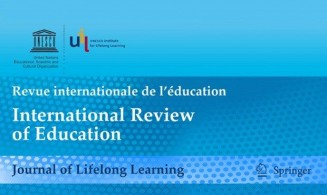

Special issue of IRE explores Indigenous knowledges as vital contributions to sustainability
IRE Special Issue on Learning Cities

The February issue of the International Review of Education – Journal of Lifelong Learning (IRE) looks at Indigenous ideas, practices and visions of education that hold direct benefit for Indigenous peoples and broader impacts for all peoples. It features seven articles by Indigenous scholars from territories which now form part of Kenya, the United States, Mexico, and Peru. These articles, while rooted in the authors’ own individual experiences, address issues of universal significance for Indigenous peoples.
Indigenous peoples speak two-thirds of humankind’s 7,000 known spoken languages. The link between Indigenous languages, cultural practices, environmental knowledge and biodiversity is well-documented. Despite historic and continuing threats to their lifeways, Indigenous peoples continue to protect and develop vital communities, land-based cultural practices, languages, and ways of knowing and being. Throughout the world, Indigenous self-education is being reclaimed, revitalised and sustained by individuals, communities and non-Indigenous allies. The articles in this special issue link Indigenous knowledge systems with education, drawing on Indigenous theories and comparative-international perspectives, and examining how Indigenous knowledges are framed to promote lifelong learning. The work of the Indigenous scholars presented here illustrates a sharing of ideas, practices, initiatives and visions that foster international networks of learning and serve as vital contributions to sustainability.
Visit the issue: https://link.springer.com/journal/11159/65/1

